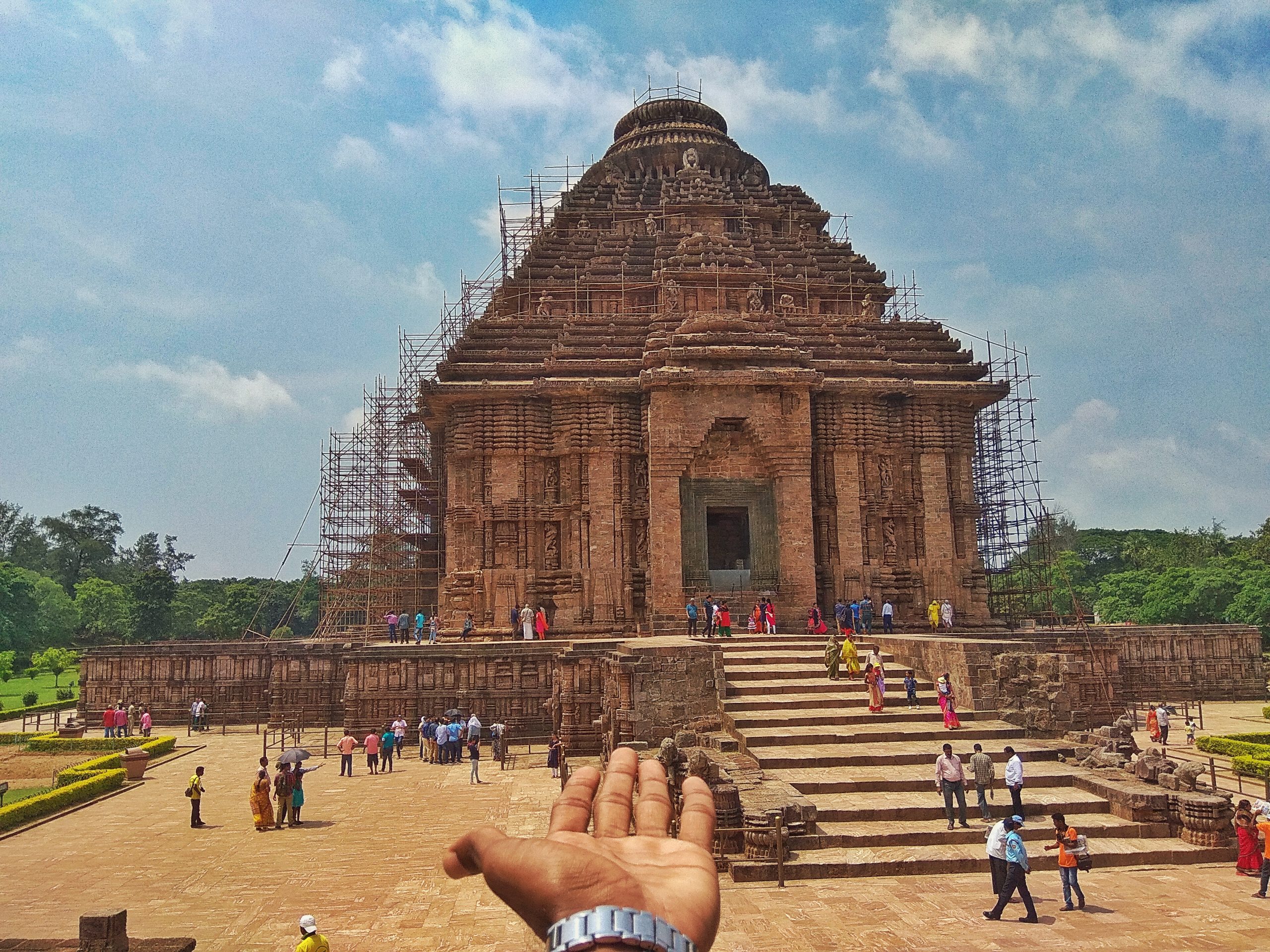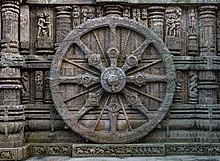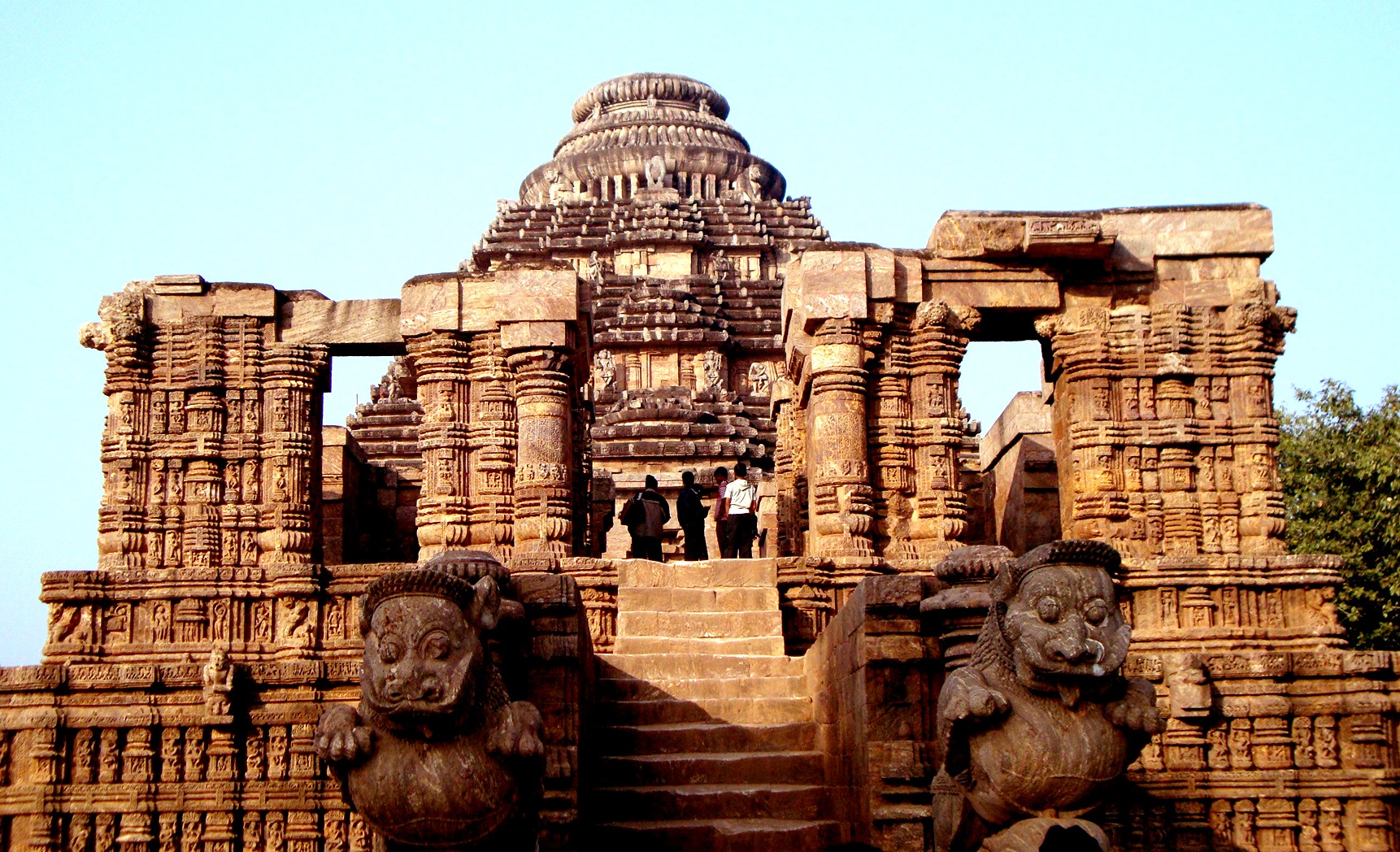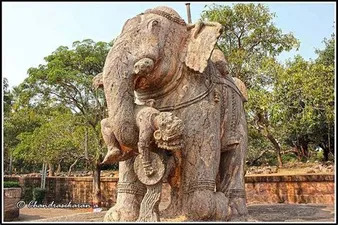


Konark
Konark Sun Temple is
a 13th-century temple. It is about 35 kilometres northeast from Puri city on the
coastline of Odisha. The temple is attributed to
king Narasimhadeva I of the Eastern Ganga
dynasty of about
1250 CE.
Dedicated to
the Hindu Sun God Surya, what remains of the temple complex today
has the appearance of a 100-foot high chariot with immense wheels and horses,
all carved from a stone. Once over 200 feet high, much of the temple is
now in ruins, in particular the large shikhar tower over
the sanctuary; at one time this rose much higher than the mandapa that
remains. The structures and elements that have survived are famed for their
intricate artwork, iconography, and themes, including erotic kama and maithuna scenes.
Also called the Surya Devalaya, it is a classic illustration of the
Odisha style of Architecture or Kalinga architecture.
The cause of
the destruction of the Konark temple is unclear and still remains a source of
controversy. Theories range from natural damage to deliberate destruction
of the temple in the course of being sacked several times by Muslim armies
between the 15th and 17th centuries. This temple was called the "Black Pagoda" in European sailor accounts as early as 1676 because it looked
like a great tiered tower which appeared black. Similarly, the Jagannath Temple in Puri was called
the "White Pagoda". Both temples served as important landmarks for
sailors in the Bay of Bengal. The temple that exists today
was partially restored by the conservation efforts of British India-era
archaeological teams. Declared a UNESCO world heritage site in 1984, it
remains a major pilgrimage site for Hindus, who gather here every year for the Chandrabhaga Mela around
the month of February.
Konark Sun
Temple is depicted on the reverse side of the Indian currency note of 10 rupees to signify its importance to
Indian cultural heritage.
The
name Konark derives
from the combination of the Sanskrit words Koṇa (corner
or angle) and Arka (the
sun). The context of the term Kona is
unclear, but probably refers to the southeast location of this temple either
within a larger temple complex or in relation to other sun temples on the
subcontinent. The Arka refers
to the Hindu sun god Surya.
The
Sun temple of Konark, the Puri Jagannth temple and the Lingaraj temple of
Bhubaneswar form a bilateral triangle. Konark temple forms one Koṇa (angular
point of the triangle).
The
Konark Sun Temple was built in 1250 CE during the reign of the Eastern Ganga
King Narsimhadeva-1 from stone in the form of a giant ornamented chariot
dedicated to the Sun god, Surya. In Hindu Vedic iconography Surya is
represented as rising in the east and traveling rapidly across the sky in a
chariot drawn by seven horses. He is described typically as a resplendent
standing person holding a lotus flower in both his hands, riding the chariot
marshaled by the charioteer Aruna. The seven horses are named after the
seven meters of Sanskrit prosody: Gayatri, Brihati, Ushnih, Jagati, Trishtubha, Anushtubha,
and Pankti. Typically seen flanking Surya are two females who represent
the dawn goddesses, Usha and Pratyusha. The goddesses are shown to be shooting
arrows, a symbol of their initiative in challenging the darkness. The
architecture is also symbolic, with the chariot's twelve pairs of wheels
corresponding to the 12 months of the Hindu calendar, each month paired
into two cycles (Shukla Paksha and Krishna Paksha).
The
Konark temple presents this iconography on a grand scale. It has 24 elaborately
carved stone wheels which are nearly 12 feet in diameter and are pulled by a
set of seven horses. When viewed from inland during the dawn and sunrise,
the chariot-shaped temple appears to emerge from the depths of the blue sea
carrying the sun.
The
temple plan includes all the traditional elements of a Hindu temple set on a
square plane. According to Kapila
Vatsyayan, the ground plan, as well the layout of sculptures and
reliefs, follow the square and circle geometry, forms found in Odisha temple
design texts such as the Silpasarini. This mandala structure
informs the plans of other Hindu temples in Odisha and elsewhere.
The
temple is designed as a chariot consisting of 24 such wheels. Each wheel has a
diameter of 9 feet, 9 inches, with 8 spokes.
Twice
as wide as they were high, the walls of the jagamohana are 100
feet (30 m) tall. The main temple and the jagamohana porch
consist of four main zones: the platform, the wall, the trunk, and the crowning
head called a mastaka. The sanctum of the main temple is now
without a roof and most of the original parts.
On
the east side of the main temple is the dance temple. It stands on a high,
intricately carved platform. The relief on the platform is similar in style to
that found on the surviving walls of the temple. According to historical texts,
there was an Aruna's pillar between the main temple and the dance temple,
but it is no longer there because it was moved to the Jagannatha Temple at Puri
sometime during the troubled history of this temple.
The
walls of the temple from the temple's base through the crowning elements are
ornamented with reliefs, many finished to jewelry-quality miniature details.
The terraces contain stone statues of male and female musicians holding various
musical instruments
The moulding layer at the bottom of the
platform contains friezes of elephants, marching soldiers, musicians, and
images depicting the secular life of the people, including hunting scenes, a
caravan of domesticated animals, people carrying supplies on their head or with
the help of a bullock cart, travelers preparing a meal along the roadside, and
festive processions. On other walls are found images depicting the daily
life of the elite as well as the common people? For example, girls are shown
wringing their wet hair, standing by a tree, looking from a window, playing
with pets, putting on makeup while looking into a mirror, playing musical
instruments such as the vina, chasing away a monkey who is trying
to snatch items, a family taking leave of their elderly grandmother who seems
dressed for a pilgrimage, a mother blessing her son, a teacher with students, a
yogi during a standing asana, a warrior being greeted with a Namaste, a mother with her child, an old woman with a walking stick
and a bowl in her hands, comical characters, among others.
The
Konark temple is also known for its erotic sculptures of maithunas. These
show couples in various stages of intimacy and in some cases coital themes. The
erotic sculptures are found on the temple's Shikhara,
and these illustrate all the bandhas (mudra forms)
described in the Kamasutra.
Other
large sculptures were a part of the gateways of the temple complex. These
include life-size lions subduing elephants, elephants subduing demons, and
horses..









